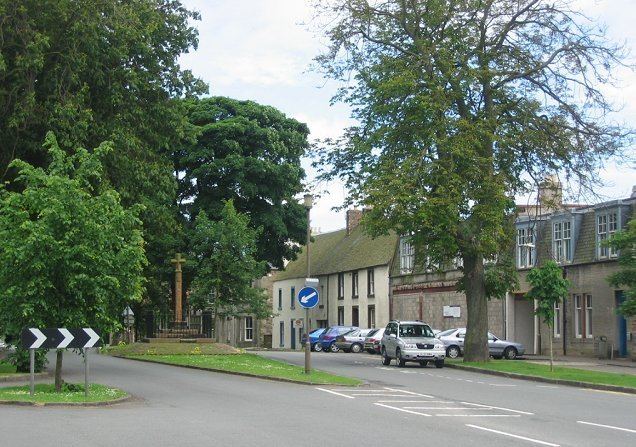OS grid reference NT410691 Post town TRANENT Local time Monday 1:02 AM | Civil parish Ormiston Sovereign state United Kingdom Postcode district EH35 Dialling code 01875 UK parliament constituency East Lothian | |
 | ||
Weather 5°C, Wind S at 8 km/h, 84% Humidity | ||
Ormiston state of mind
Ormiston is a village in East Lothian, Scotland, near Tranent, Humbie, Pencaitland and Cranston, located on the north bank of the River Tyne at an elevation of about 276 ft.
Contents
- Ormiston state of mind
- Map of Ormiston Tranent UK
- Ormiston fc v lothian hutchison vale
- Name
- Design
- Ormiston Coal Co Ltd
- Ormiston Hall
- Shops in Ormiston
- Mercat Cross
- Notable people
- Project Star Fall
- References
Map of Ormiston, Tranent, UK
The village was the first planned village in Scotland, founded in 1735 by John Cockburn (1685–1758), one of the initiators of the Agricultural Revolution.
Ormiston fc v lothian hutchison vale
Name
The word Ormiston is derived from a half mythical Anglian settler called Ormr, meaning 'serpent' or 'snake'. 'Ormres' family had possession of the land during the 12th and 13th centuries. Ormiston or 'Ormistoun' is not an uncommon surname, and Ormr also survives in some English placenames such as Ormskirk and Ormesby. The latter part of the name, formerly spelt 'toun', is likely to descend from its Northumbrian Old English and later Scots meaning as 'farmstead' or 'farm and outbuildings' rather than the meaning 'town'.
There was an "Ormiston" in Berwickshire, near Linton, where the legend of the Worm of Linton was related to land ownership by Lord Somerville and Lord Lindsay. The Cockburn family may have brought the name from the Berwickshire "Ormiston" to the East Lothian location in the 14th-century.
Design
The village consists mainly of a broad Main Street, with a row of mostly two storey houses along each side. It crosses two bridges, one over the now redundant railway route, and the other a narrow bridge over the river Tyne. Using strict guidelines for its appearance, John Cockburn put housing for artisans and cottage industries (spinning and weaving) around the original mill hamlet. When he did not achieve the expected return on his investment, he sold it to the Earl of Hopetoun in 1747. The linen trade became a failure, and by 1811 the distillery shut down. A brewery and one of Scotland's first bleachfields were also built here as well. Ormiston later became a mining village. The Ormiston Coal Company, whose workings were south of Tranent in East Lothian. The company were one of a number of small concerns working either a single or a few linked, small pits on the East Lothian coalfield. ().
Ormiston Coal Co. Ltd.
The principal collieries at Ormiston were:
Ormiston Hall
Ormiston Hall was built for Cockburn (1745–48) and was later extended for the Earl of Hopetoun.
Ormiston Hall lay to the south of the village. It was built in 1745 but was added to on at least three occasions in the next 100 years. The remains of the pre-Reformation St Giles Parish Church can still be seen nearby.
Ormiston Hall now lies in ruins with residential properties built in and around the grounds.
The Great Yew of Ormiston grows to the south of the hall site. It is a rare example of a layering yew-tree and, according to the Forestry Commission, is as much as 1000 years old.
Shops in Ormiston
There are a number of shops in Ormiston. On the Main Street:
Elsewhere in the village:
There are a number of small businesses operating from units in the Cockburn Halls, formerly the Miners' Welfare building.
Mercat Cross
The 15th-century pre-Reformation Mercat Cross on Main Street is unusual for its truly cruciform shape, with three modern steps and a railed enclosure.
Notable people
Project Star Fall
The village and especially the Primary School were the main sites in the well documented events of 25 February 2015 that became known as Project Star Fall.
